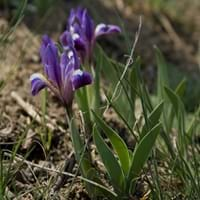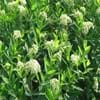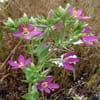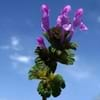Life Span
Perennial
Perennial
Origin
Europe, Mediterranean
World, Pandemic, North America, Europe, Africa, Asia
Types
Not Available
Alizes
Bumblebee Deelite
Maui Moonlight
Langport Wren
Sarah Taylor
Titan's Glory
Thornbird
Jane Phillips
Orinoco Flow
Habitat
Sandy areas, Stony hillsides, Upland soils
gardens, Hillside, Riverbanks, Warmer regions, Wet forest
USDA Hardiness Zone
Not Available
Not Available
Sunset Zone
A2, A3, 1a, 1b, 2a, 2b, 3a, 3b, 4, 5, 6, 7, 8, 9, 10, 11, 12, 13, 14, 15, 16, 17, 18, 19, 20, 21, 22, 23, 24
Not Available
Habit
Mat-forming
Clump-Forming
Flower Color
Purple, Light Pink
White, Yellow, Blue, Purple, Orange, Pink, Rose, Coral, Peach, Burgundy, Lavender, Plum, Orange Red, Dark Salmon, Bronze, Chocolate, Black
Flower Color Modifier
Bicolor
Bicolor
Fruit Color
Not Available
Not Available
Leaf Color in Spring
Green
Not Available
Leaf Color in Summer
Green
Not Available
Leaf Color in Fall
Green
Not Available
Leaf Color in Winter
Light Green
Light Green
Leaf Shape
Oval
Long Linear
Plant Season
Spring, Summer, Fall, Winter
Not Available
Sunlight
Full Sun, Partial Sun
Full Sun, Partial Sun
Type of Soil
Sand
Clay, Loam, Sand
The pH of Soil
Neutral, Alkaline
Acidic, Neutral, Alkaline
Soil Drainage
Well drained
Well drained
Bloom Time
Summer
Not Available
Tolerances
Drought
Drought
Where to Plant?
Container, Ground
Ground, Pot
How to Plant?
Divison, Seedlings
From Rhizomes, Stem Planting
Plant Maintenance
Medium
Medium
Watering Requirements
Average Water Needs
Does not require lot of watering, Keep ground moist, Water when soil is dry
In Summer
Lots of watering
Lots of watering
In Spring
Moderate
Moderate
In Winter
Average Water
Average Water
Soil pH
Neutral, Alkaline
Acidic, Neutral, Alkaline
Soil Type
Sand
Clay, Loam, Sand
Soil Drainage Capacity
Well drained
Well drained
Sun Exposure
Full Sun, Partial Sun
Full Sun, Partial Sun
Pruning
Remove damaged leaves, Remove dead branches, Remove dead leaves
Remove dead leaves, Remove dead or diseased plant parts, Requires very little pruning
Fertilizers
All-Purpose Liquid Fertilizer
All-Purpose Liquid Fertilizer
Pests and Diseases
Not Available
Bacterial Diseases, Fungal Diseases, Viruses
Plant Tolerance
Drought
Drought
Flower Petal Number
Single
Single
Fragrant Bark/Stem
Yes
No
Foliage Texture
Fine
Medium
Foliage Sheen
Matte
Matte
Attracts
Flies
Bees, Butterflies
Allergy
Skin irritation
Asthma
Aesthetic Uses
Showy Purposes, Used for decorating walls, fences, gates, hedges, etc.
Beautification, Showy Purposes
Beauty Benefits
Not Available
Not Available
Environmental Uses
Air purification
Air purification
Medicinal Uses
Folklore
No Medicinal Use
Part of Plant Used
Flowers, Leaves
Flowers, Leaves, Rhizomes, Root
Other Uses
Decoration Purposes, useful as a ground cover
Making Perfumes, Oil is used for aromatherapy, Used as a sedative, Used as essential oil
Used As Indoor Plant
No
No
Used As Outdoor Plant
Yes
Yes
Garden Design
Edging, Edible, Groundcover, Herb / Vegetable, Lawns and Turf, Mixed Border, Rock Garden / Wall
Bedding Plant, Cutflower, Mixed Border, Rock Garden, Wall
Botanical Name
THYMUS serpyllum
IRIS
Common Name
Creeping Thyme, Breckland thyme, Breckland-garden, Mother-of-thyme, Wild thyme
Iris
In Hindi
Creeping Thyme
Iris
In German
Feldthymian, Quendel
Iris
In French
Serpolet, Thym sauvage
Iris
In Spanish
Serpol, Tomillo
Iris
In Greek
Creeping Thyme
Ίρις
In Portuguese
Tomilho
Íris
In Polish
Creeping Thyme
Irys
In Latin
Creeping Thyme
Iris
Phylum
Magnoliophyta
Tracheophyta
Class
Magnoliopsida
Liliopsida
Order
Lamiales
Asparagales
Family
Lamiaceae
Iridaceae
Clade
Angiosperms, Asterids, Eudicots
Angiosperms, Monocots
Subfamily
Nepetoideae
Iridoideae
Season and Care of Creeping Thyme and Iris
Season and care of Creeping Thyme and Iris is important to know. While considering everything about Creeping Thyme and Iris Care, growing season is an essential factor. Creeping Thyme season is Spring, Summer, Fall and Winter and Iris season is Spring, Summer, Fall and Winter. The type of soil for Creeping Thyme is Sand and for Iris is Clay, Loam, Sand while the PH of soil for Creeping Thyme is Neutral, Alkaline and for Iris is Acidic, Neutral, Alkaline.
Creeping Thyme and Iris Physical Information
Creeping Thyme and Iris physical information is very important for comparison. Creeping Thyme height is Not Available and width Not Available whereas Iris height is Not Available and width Not Available. The color specification of Creeping Thyme and Iris are as follows:
Creeping Thyme flower color: Purple and Light Pink
Creeping Thyme leaf color: Green
Iris flower color: White, Yellow, Blue, Purple, Orange, Pink, Rose, Coral, Peach, Burgundy, Lavender, Plum, Orange Red, Dark Salmon, Bronze, Chocolate and Black
- Iris leaf color: Not Available
Care of Creeping Thyme and Iris
Care of Creeping Thyme and Iris include pruning, fertilizers, watering etc. Creeping Thyme pruning is done Remove damaged leaves, Remove dead branches and Remove dead leaves and Iris pruning is done Remove dead leaves, Remove dead or diseased plant parts and Requires very little pruning. In summer Creeping Thyme needs Lots of watering and in winter, it needs Average Water. Whereas, in summer Iris needs Lots of watering and in winter, it needs Average Water.





